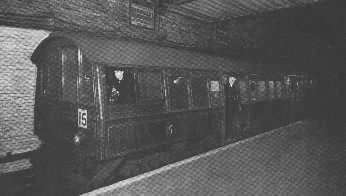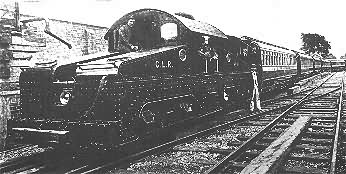
Suburban Electric Railway Association
Located at the COVENTRY ELECTRIC RAILWAY CENTRE, Rowley Road, Baginton, Warwickshire
Established
1996
The History Zone
Electrifying London
The First Ten Years
The City And South London Railway - London's First Tube
In 1884 powers were obtained for the construction of an underground railway from Monument to Elephant & Castle. This line was promoted as The City Of London & Southwark Subway and was envisaged by it's promoters as conveying passengers in cable hauled cars. Work started on the line in 1886 and the following year the act of parliament was obtained that allowed the line to be constructed as far south as Stockwell. By 1888 the line was nearly complete but the promoters began to have second thoughts about cable haulage and started looking at the new electric railways that had appeared in Europe in the previous few years. Under advice from engineers from Mather & Platt of Manchester the railway company obtained powers to have their lin worked by electric traction and two years later in December 1890 the line opened as the City & South London Railway with passenger trains running from the northern terminus of King William Street to Stockwell ,south of the Thames, a distance of three and a half miles. There were intermediate stations at Borough, Elephant & Castle, Kennington and Oval. The trains were made up of three coaches with high back seats running longitudinally above which were tiny window slits, this layout earned the original C&SL cars the name 'Padded Cells', at the end of each coach was the gate entrances through which passengers boarded and alighted. the trains were hauled by squat looking four wheeled electric locomotives built by Beyer Peacock and featuring electrical equipment supplied by Mather & Platt.

The C&SLR was extended further south to Clapham Common and north to Morgate in 1900. To-day the line forms the Northern Line City Branch having been extensively rebuilt in the early 1920s.
The Waterloo & City Railway

London had to wait a further eight years for it's second electric underground railway. The W&C was supported by a main line company, the London & South Western Railway, and ran from their terminus at Waterloo for a distance of just over a mile an a half to Bank station in the City Of London. The line is best known by it's nickname of 'The Drain'. It was opened 1898 and had trains that were formed of four coaches, the two intermediate ones were trailer cars whilst the outer ones had a driving cab and carried all the electrical equipment. Through a system of heavy duty cables the motors on both the front and rear cars were controlled by the driver at the front simultaneously. this arrangement was later regarded as a fire risk and not permitted on later tube railways but the W&C were not asked to modify their trains accordingly. The line became part of the Southern Railway in 1923 who built replacement stock for the line in 1940. It was nationalised along with the rest of the SR in 1948 and became part of British Railways. New stock was provided by BR in 1993 and a year later the line passed into the ownership of London Underground Limited who operate it today.
The Central London Railway
London's third underground line opened in 1900 and ran from Shepherd's Bush in West London to Bank station in the City. Trains of six and seven coaches of gate ended clerestory stock built by the Ashbury Car Company were hauled by steeple cab Bo-Bo electric locomotives built in America by General Electric Co.(pictured below) at frequent intervals.

The Central London Railway operated a flat fare policy of two pence for any single journey, this earned it the popular title of 'The Two-penny Tube' with Londoners. Like most of the early tube railways it followed a twisted route over it's length as it followed for the most part the layout of the roads overhead, the reason for this was to avoid paying compensation to landowners if the line had to be built below their property.
The Central London Railway went on to be extended further at both ends over the following years and today the original route is part of London Undergrounds' Central Line.
At the start of the 20th Century new tube lines were under construction in London but also serious consideration was being given to the electrification of both the 'Cut And Cover' surface gauge routes - The Metropolitan and the District Railways - these will be looked at next.
